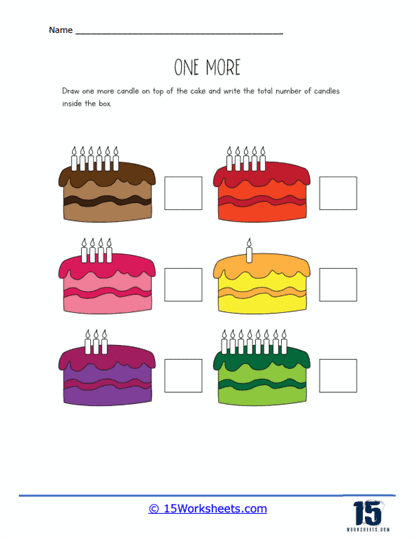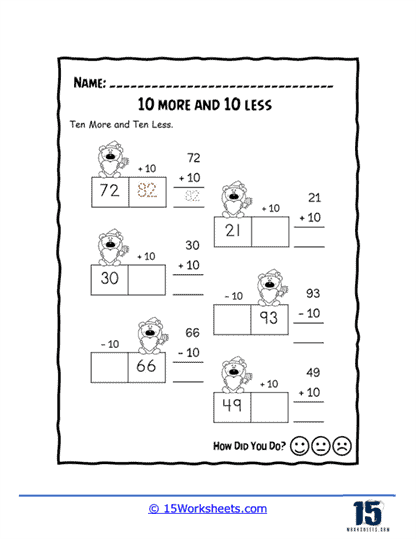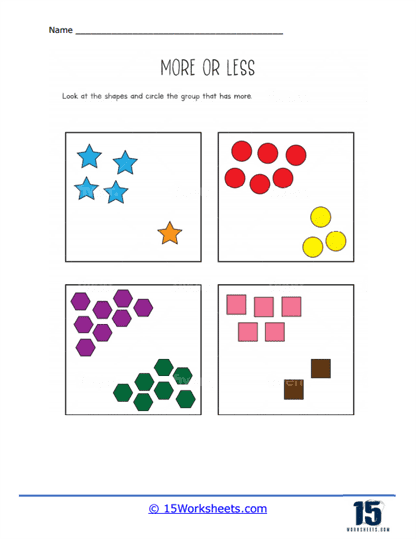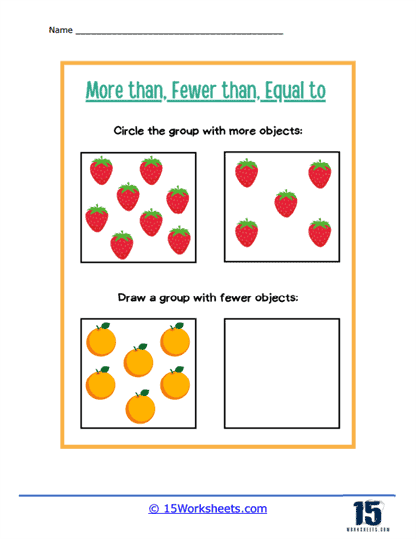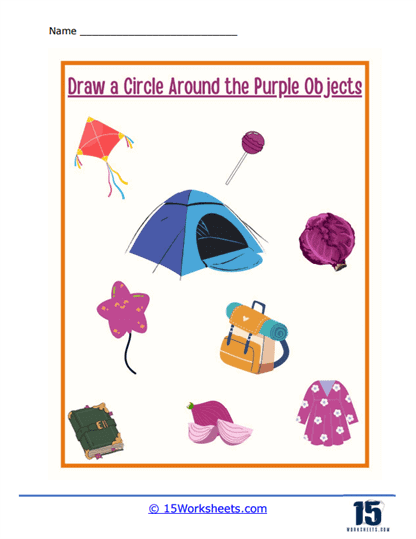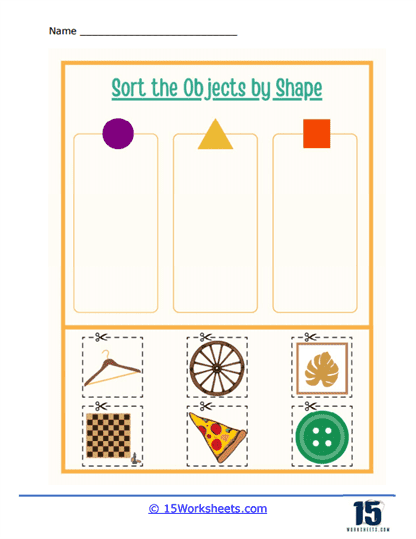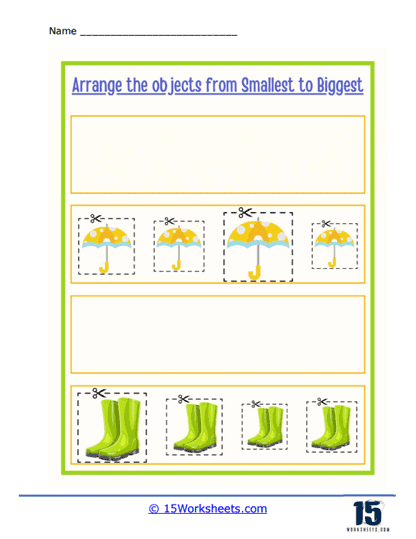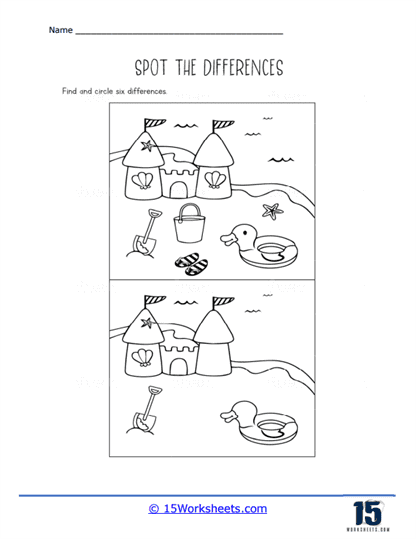Comparisons Worksheets
All About These Worksheets
This series of Comparisons worksheets is designed to develop critical thinking skills, strengthen vocabulary, and foster cognitive growth by introducing young learners to the concept of comparing objects, quantities, sizes, and characteristics. Through a variety of engaging exercises, students will enhance their understanding of concepts such as more and less, big and small, heavy and light, and same and different.
These worksheets provide an opportunity for students to explore and analyze visual representations, practice sorting and categorizing, and develop important foundational skills that lay the groundwork for mathematical and logical reasoning. Through these worksheets, students will:
- Practice counting skills and explore the concept of one more, ten more, and ten less through interactive exercises and number recognition activities;
- Engage in a coloring activity that helps reinforce the understanding of the concept of big and small by coloring objects based on their size;
- Identify and differentiate between empty and full through visual representations;
- Explore the concepts of heavy and light objects, comparing and categorizing objects based on their weight through a coloring activity;
- Practice comparing quantities and identifying whether a group of objects has more or less items;
- Engage in visual discrimination activities, identifying and circling objects that are the same or different from a given set;
- Develop color recognition skills and practice comparing objects by identifying and circling objects that are colored purple;
- Sort objects based on their shapes, distinguishing and categorizing objects according to specific geometric attributes;
- Order objects based on their size, arranging them from smallest to biggest;
- And spot the differences between two similar pictures.
Through this engaging series of Comparisons worksheets, young learners will develop essential critical thinking and observational skills. By participating in activities that focus on quantities, sizes, shapes, and characteristics, students will enhance their ability to analyze and compare objects. These worksheets also provide opportunities for hands-on exploration, visual discrimination, and logical reasoning. By engaging with these exercises, students will develop a foundation for mathematical thinking, problem-solving, and the ability to make informed comparisons in various contexts.
How to Introduce Kids to Comparisons
Teaching kids to make comparisons is an essential skill that helps develop critical thinking, language skills, and understanding of the world around them. Start by introducing your child to objects with basic, easily identifiable differences such as size, color, and shape, using items like toys, fruits, or everyday household objects. Teach them comparative and superlative adjectives and explain how these words help us compare two or more things. Visual aids, such as pictures, flashcards, or drawings, can make it easier for children to understand the concepts.
Provide ample opportunities for practice by asking your child to compare objects, animals, or even their favorite characters from stories or movies. Encourage them to develop their observation skills by noticing differences and similarities between things in their environment. Make learning fun by turning comparisons into games or activities, such as sorting objects by size or color or playing “spot the difference” games.
As your child becomes more comfortable with simple comparisons, gradually introduce more complex comparisons involving multiple characteristics. Teach them to analyze and weigh the pros and cons of different options, which can be applied to decision-making and problem-solving. Use real-life examples to make the learning process more engaging, such as comparing the prices of items at a store or evaluating the nutritional value of different foods.
Reinforce learning by regularly reviewing the concepts and vocabulary of comparisons, providing praise and constructive feedback. Remember that children learn at different paces, so be patient and adapt your teaching approach to match your child’s learning style and ability.

